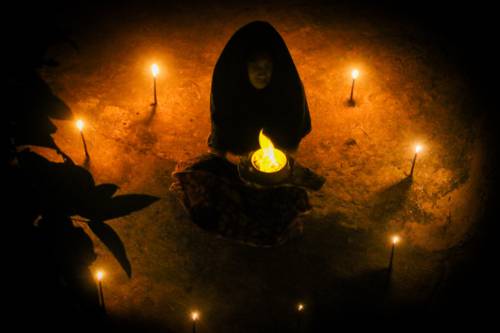
FAQ About Influence of Folklore in Modern Digital Storytelling

What is folklore and how does it relate to modern digital storytelling?
Folklore refers to the traditional beliefs, myths, tales, and practices of a culture, handed down through generations. In modern digital storytelling, folklore is often used as a source of inspiration for crafting narratives in video games, interactive fiction, and other digital media. By incorporating elements of folklore, creators can add depth, cultural significance, and a sense of authenticity to digital stories, appealing to global audiences familiar with these tales.

How is folklore used in online gaming?
Folklore is used in online gaming by integrating traditional story elements, characters, and settings into the gameplay. Games may feature mythological creatures, legendary heroes, or culturally significant narratives as central plot devices or quests. This not only enriches the gaming experience by providing a narrative background but also enhances cultural representation and diversity within the game world.

Can you provide examples of games that incorporate folklore?
Several popular games incorporate folklore into their narratives. "The Witcher" series draws heavily from Slavic mythology, featuring mythical creatures and legends. "Okami" is another game that incorporates Japanese folklore, allowing players to interact with characters and stories from Shinto mythology. Similarly, "Never Alone" is inspired by the folklore of the Iñupiat people, delivering a profound cultural narrative through its storytelling.

Why is folklore significant in interactive fiction?
Folklore is significant in interactive fiction because it provides a rich tapestry of narrative possibilities that can engage players on multiple levels. These stories often carry universal themes and moral lessons that resonate with audiences, allowing for interactive storytelling that is both educational and entertaining. By immersing players in culturally diverse worlds, folklore in interactive fiction can foster appreciation and understanding of different cultures.

In what ways do digital narratives preserve cultural folklore?
Digital narratives preserve cultural folklore by digitizing and disseminating traditional stories to a broader audience. Through interactive mediums like games and storytelling apps, these narratives remain relevant and accessible to younger generations. Additionally, digital storytelling allows for creative adaptations while respecting traditional themes and values, ensuring the continuity and evolution of cultural folklore.

How does the integration of folklore benefit creators and audiences?
For creators, integrating folklore into digital storytelling provides a rich source of authentic narrative material that can attract diverse audiences interested in cultural tales. For audiences, it offers exposure to unfamiliar myths and legends, promoting cultural understanding and appreciation. This symbiotic relationship enhances creativity and broadens the global reach of both digital media and folklore traditions.

What challenges do creators face when incorporating folklore into digital stories?
Creators face several challenges when incorporating folklore into digital stories, including cultural sensitivity and accuracy in representation. It's crucial to respect the origins and meanings of the stories while adapting them for modern audiences. Creators must balance creative liberties with authenticity, ensuring they do not inadvertently perpetuate stereotypes or misrepresent cultural nuances. Collaborating with cultural experts or communities can help address these challenges.

How can folklore influence the themes of a digital narrative?
Folklore can influence the themes of a digital narrative by introducing elements such as morality, heroism, or the supernatural. These themes often reflect cultural values and societal norms and can guide the storyline’s direction, character development, and moral decisions within the narrative. By drawing on folk narratives, creators can infuse their digital stories with timeless, universally relatable themes.

Are there risks in misrepresenting folklore in digital storytelling?
Yes, there are significant risks in misrepresenting folklore in digital storytelling, including cultural appropriation and the perpetuation of stereotypes. Misrepresentation can lead to misunderstandings or offend the cultures whose folklore is being adapted. It is crucial for creators to engage with the source culture respectfully and accurately, often involving collaboration with cultural consultants or native storytellers to maintain integrity and respect.

How does folklore contribute to the authenticity of a digital narrative?
Folklore contributes to the authenticity of a digital narrative by grounding it in ancient traditions and beliefs, lending a sense of realism and depth that fictional universes might lack. When audiences recognize and connect with familiar mythological themes or characters, it enhances the perceived authenticity of the narrative and enriches the overall immersive experience.

What role does technology play in bringing folklore into digital storytelling?
Technology plays a crucial role in bringing folklore into digital storytelling by facilitating the creation and dissemination of rich, interactive experiences. Advanced graphics, virtual reality, augmented reality, and AI allow creators to realistically portray folklore narratives and offer immersive experiences that connect audiences with ancient stories in novel ways. Technology also enables the adaptation of these stories for different platforms, making them more accessible to global audiences.

How do digital storytellers ensure cultural sensitivity when using folklore?
Digital storytellers ensure cultural sensitivity when using folklore by conducting thorough research and engaging with cultural experts or native storytellers. This collaboration helps accurately convey the origins and meanings of the stories being adapted. Creators should prioritize authentic representation, consider the cultural context, and seek input from the source culture to avoid misrepresentations or inappropriate use of folklore elements.

What tools or methods are used to integrate folklore in digital games?
Various tools and methods are used to integrate folklore into digital games, including narrative design software, character modeling, and cultural consultation. Game developers often research folklore extensively and collaborate with cultural historians or advisors to ensure accurate portrayal. Storyboarding, scripting, and the use of cultural motifs in graphics and sound design are also widely employed to weave folklore into the gaming narrative seamlessly.

What impact does folklore-based storytelling have on player engagement?
Folklore-based storytelling significantly enhances player engagement by providing unique and compelling narratives rooted in intriguing cultural myths and legends. Such storytelling often encourages exploration and inquisitiveness, allowing players to uncover new aspects of the game world. This immersive engagement enriches the gaming experience, fostering a deeper connection with the story and its cultural context.

Can interactive digital folklore be educational?
Yes, interactive digital folklore can be highly educational. By immersing players in a culture's myths and legends, interactive storytelling can teach about historical contexts, moral lessons, cultural values, and societal norms. These narratives often provide insights into human behavior and the natural world, making them not only entertaining but also informative and enriching for players of all ages.

How has the global nature of digital media influenced folklore storytelling?
The global nature of digital media has greatly influenced folklore storytelling by facilitating cross-cultural exchanges and collaborations. Digital platforms allow for the dissemination of folklore narratives to a wider audience, transcending geographical boundaries. This global reach encourages the fusion and adaptation of different cultural stories, fostering an appreciation for diverse traditions and narratives among international audiences.

What future trends are expected in the integration of folklore in digital narratives?
Future trends in the integration of folklore in digital narratives include increased collaboration between creators and cultural communities to ensure authentic storytelling. Advances in technology, like virtual and augmented reality, will likely play a key role in delivering more immersive folklore experiences. Additionally, there is a growing interest in exploring underrepresented folk traditions, providing a platform for lesser-known cultures to share their stories globally.

Are there ethical considerations when adapting folklore to digital media?
Yes, there are several ethical considerations when adapting folklore to digital media, primarily involving respect and accuracy in representation. It is essential to avoid cultural appropriation and to engage with the source culture meaningfully. Creators should strive for authentic adaptations that honor the original narrative while ensuring that they do not exploit or distort the cultural significance of the folklore.

What cultural benefits arise from incorporating folklore in digital storytelling?
Incorporating folklore in digital storytelling offers numerous cultural benefits, such as promoting cultural diversity and understanding. It provides a platform for sharing and preserving cultural stories, fostering a greater appreciation for different traditions. By representing a variety of cultural narratives, digital storytelling helps bridge cultural gaps and encourages a more inclusive dialogue between different communities worldwide.

Can the use of folklore in digital storytelling influence modern culture?
Yes, the use of folklore in digital storytelling can significantly influence modern culture by reintroducing traditional narratives to new generations in an engaging format. As these stories become part of mainstream media, they can shape cultural identities and values. This continual exchange and adaptation can lead to a richer, more inclusive cultural landscape that acknowledges and celebrates global diversity.
